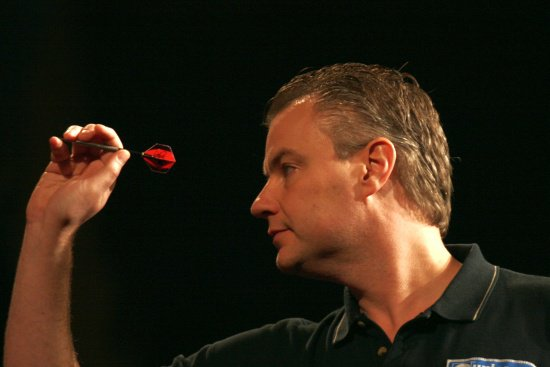Practice ABC

You have your darts and your board so you are ready to play darts.
Now what? You need to establish some guidelines to maximize the benefits of practice and to keep yourself interested enough to keep at it.
If you were to just start throwing at the board without a gameplan there would be no focus or concentration. You need to have goals to work towards, both short and long term.
These goals can be entirely related to your practice as you learn to measure yourself against the board. This will help you greatly when you are in a real match against a tough opponent and the old darts cliche comes into effect: play the board, not your opponent.
There are three key points when developing your practice regime:
- Avoid distractions
- Blueprint your routine
- Calculate your averages
Avoid distractions
This seems obvious, but it might be the most difficult aspect of your practice session. Once you have an idea of how long you wish to practise, you then must decide when to practice. Some people have more options than others, but the goal should be to pick a time when you are least likely to be called away, or a time when you can turn your telephone off.Let the people around you know that you do not wish to be disturbed(for what it's worth). Play some music that you enjoy in order to mask any other sounds that might otherwise distract you, such as children or noisy neighbours.
Don't start practicing if something else needs to be done that will preoccupy your thoughts. A half hour of dedicated practice is far more effective than a hours worth of distracted throwing.
Blueprint your routine
Once you decide how long your routine is going to last you then need to structure it. This structure should be based on the minimum amount of time you are likely to have to practice. This way you will repeat the same routine every time you practise, which is very helpful in determining if you are improving or not.If you find yourself with extra time in a given session you can repeat the session or just do some supplementary drills (see future articles).
The first part of your routine should be a warm-up drill. You will want to loosen your arm, align your mechanics, and gain your focus. The first thing to do is to go around the board on the big single segments (from 1 to 20), then the small single segments (between the treble and the bull) and then the 25 segment. By then your arm will be nice and loose and you can move on to the doubles, the bull, and finally the trebles. After hitting all those doubles and trebles you're ready to test yourself seriously.
The second and main portion of the routine should challenge your limits. This will maintain your interest in practicing. I try to simulate potential match conditions. For instance, if my next competition is double-in 501, that is what I play. If the format is best of 3 or 5 legs per set, that is what I play.
I play against an imaginary opponent who is very consistent (30 points per dart). If I have the start I know I have 18 darts in which to win the leg, or I lose. Against the throw I have only 15 darts.
You can tailor these numbers to your skill level, but if you are winning more than you are losing you should make it more difficult.
A good method of simulating throwing for the bull is to designate a 50 as a win, a 25 as a tie, and anything else as a loss.
Calculate your averages
The only way to rate your performance is to chart your progress. I always use pen and paper to keep my scores while practicing. If you play 20 legs of 501, multiply 501 x 20 and then subtract any remaining scores. Then add up how many darts you threw and divide it into your point total. This will give you your points per dart (p.p.d) average.Divide the number of games you won by the total you played and multiply by 100. This will give you your win percentage. For practice purposes the p.p.d. average is more important than the win percentage, but they are both good measuring sticks. At the end of your session enter the date and your averages into a practise log. If your average does not gradually increase you will be alerted that there is a problem. In most cases, I think you will be very pleased with the results.
Good luck with your practice